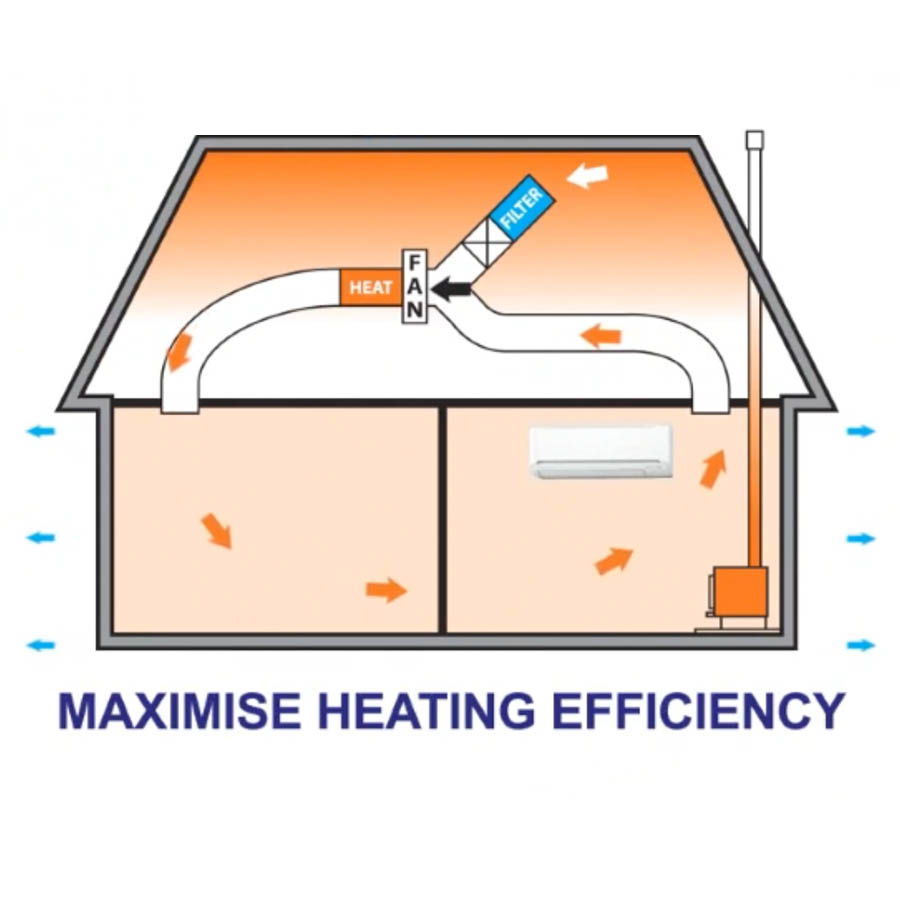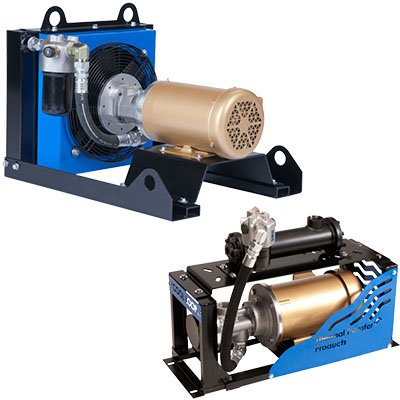Your Comprehensive Guide to Using DVS Heat Transfer Systems in Renewable Energy Projects
Exploring the Advantages and Applications of Heat Transfer Equipments in Modern Industry
Heat transfer systems play an important role in modern industry. They incorporate different devices such as convection, transmission, and radiation, each contributing to efficient thermal management. Industries like production and aerospace benefit significantly from these systems. As improvements continue, the assimilation of ingenious products and modern technologies assures to boost power efficiency. This advancement elevates essential inquiries regarding the future effects for sustainability and operational costs throughout numerous industries. What lies ahead in this recurring transformation?
Comprehending Heat Transfer Concepts
Heat transfer principles are basic to the procedure of numerous commercial systems. These principles encompass the systems of convection, radiation, and transmission, each playing an essential function in handling thermal power. Comprehending conduction entails evaluating how Heat relocates via solid materials, while convection pertains to Heat transfer in fluids, driven by fluid motion. Radiation, distinctive from the other 2, includes power transfer with electromagnetic waves. The effectiveness of Heat transfer influences system performance, energy intake, and total productivity. Effective thermal monitoring is important in procedures such as Heat, heating, and air conditioning recuperation. By grasping these principles, industries can maximize their operations, minimize energy expenses, and enhance tools durability, consequently contributing to a more lasting and efficient industrial landscape.
Key Sorts Of Heat Transfer Equipments
While different markets utilize Heat transfer systems for diverse applications, numerous crucial kinds attract attention because of their certain functions and performances. The most usual kinds include radiation, convection, and transmission systems. Transmission systems transfer Heat with straight get in touch with between products, making them effective in solid-state applications. Convection systems, on the various other hand, use fluid activity to move Heat, appropriate for home heating or cooling down liquids and gases. Radiation systems run without a medium, relying upon electro-magnetic waves to transfer Heat, perfect for high-temperature settings. Each type offers distinctive purposes, permitting markets to tailor their Heat transfer services based upon functional requirements, energy effectiveness, and cost-effectiveness. Comprehending these systems is important for maximizing performance in different industrial settings.
Industrial Applications of Heat Transfer Technologies
The application of Heat transfer modern technologies in market plays an important function in boosting energy efficiency and optimizing processes. DVS Heat Transfer Systems. By applying advanced Heat exchange systems, business can substantially minimize their ecological effect while enhancing overall performance. This assimilation not only fosters sustainability yet additionally aligns with modern-day regulative and consumer needs for greener methods
Power Effectiveness Improvements
As sectors significantly prioritize sustainability, power efficiency enhancements in Heat transfer innovations have actually become essential for decreasing operational costs and ecological effect. Enhanced Heat exchangers, for example, utilize innovative materials and layouts to make the most of thermal performance while reducing energy consumption. In addition, incorporating variable speed drives in pumping systems permits far better control of liquid flow, bring about substantial power savings. The implementation of clever sensing units and automation gives real-time monitoring, enabling adjustments that maximize energy use. In addition, waste Heat recovery systems capture excess thermal energy, converting it into usable power. These developments not only improve energy effectiveness but likewise add to an extra lasting industrial landscape by decreasing greenhouse gas discharges and supporting conformity with ecological guidelines.
Refine Optimization Techniques
Refine optimization techniques are vital in boosting the effectiveness and performance of Heat transfer modern technologies in industrial applications. These techniques entail refining procedures to take full advantage of Heat transfer performance while minimizing power intake and operational expenses. Approaches such as computational fluid characteristics (CFD) modeling allow engineers to analyze and simulate Heat transfer circumstances, identifying locations for improvement. In addition, real-time tracking systems can offer beneficial information on temperature slopes and circulation rates, allowing modifications that optimize efficiency. Applying innovative control methods, such as anticipating analytics, can improve system responsiveness to varying operational demands. By using these optimization strategies, markets can achieve greater thermal performance, minimized downtime, and improved product quality, inevitably causing raised competitiveness in the industry.

Ecological Effect Reduction
While commercial Heat transfer technologies are vital for functional effectiveness, their application also provides possibilities for significant ecological Read Full Article effect reduction. By enhancing power performance, these systems lessen gas consumption, resulting in lower greenhouse gas emissions. Progressed Heat exchangers that site can recover waste Heat, redirecting it to preheat incoming fluids, consequently lowering power needs. Additionally, the combination of Heat transfer technologies in eco-friendly energy systems, such as solar thermal and geothermal applications, supports the shift to sustainable techniques. Industries that utilize these innovations also profit from minimized functional costs and enhanced regulatory conformity. In general, the calculated implementation of Heat transfer systems not only strengthens productivity but likewise fosters an extra sustainable commercial landscape, adding to worldwide environmental goals.
Advantages of Efficient Heat Transfer Equipments
Efficient Heat transfer systems provide considerable advantages in modern-day sector, mainly with enhanced energy efficiency and cost decrease. By optimizing thermal monitoring, these systems minimize energy waste, leading to reduced functional expenses (DVS Heat Transfer Systems). Businesses can attain better sustainability and enhanced productivity.

Energy Efficiency Improvements
As sectors increasingly prioritize sustainability and cost-effectiveness, power efficiency renovations in Heat transfer systems have actually become a crucial emphasis. Improved effectiveness in these systems leads to decreased power consumption, allowing facilities to operate even more sustainably. By maximizing Heat transfer techniques, industries can minimize waste Heat and attain far better thermal management, significantly decreasing their ecological impact. Developments in technologies such as Heat exchangers and insulation materials add to improved efficiency and reliability. Carrying out energy-efficient Heat transfer options not just sustains conformity with regulative standards yet likewise fosters a society of innovation within organizations. Inevitably, these renovations are vital in lining up industrial operations with worldwide power conservation objectives, paving the method for a more sustainable future in production and handling sectors.
Cost Reduction Opportunities
By optimizing Heat transfer systems, sectors can expose substantial price decrease possibilities that improve their lower line. Reliable Heat transfer lowers power intake, resulting in lower utility costs and reducing operational expenditures. Additionally, boosted system efficiency reduces the need for upkeep and fixings, furthermore conserving expenses with time. Boosted Heat transfer can likewise expand equipment lifespan, allowing business to postpone capital investment on replacements. Waste Heat recuperation systems can transform excess Heat right into usable power, additionally driving down prices. These systems not just streamline processes yet also add to sustainability initiatives, placing business positively in a significantly eco-conscious market. On the whole, the economic benefits of efficient Heat transfer systems are crucial and considerable for competitive benefit.
Technologies in Heat Transfer Solutions
Exactly how can modern market boost its procedures through ingenious Heat transfer solutions? By adopting advanced products and click reference technologies, sectors can significantly improve thermal performance and efficiency. Technologies such as nanofluids, which enhance Heat transfer capacities past conventional liquids, and phase modification materials that keep and release thermal energy, are acquiring traction. In addition, the assimilation of smart sensors and IoT gadgets permits for real-time tracking and optimization of Heat transfer processes, minimizing waste and enhancing system responsiveness. Additive production methods make it possible for the creation of even more complex Heat exchangers that make best use of surface area while decreasing product use. Collectively, these advancements drive operational performance and create competitive advantages in different markets, including power, manufacturing, and aerospace.
The Function of Heat Transfer in Sustainability Initiatives
While the push for sustainability remains to reshape sectors, the duty of Heat transfer modern technologies ends up being progressively crucial in attaining ecological goals. Reliable Heat transfer systems facilitate energy efficiency by enhancing thermal monitoring in various procedures, considerably decreasing power intake and greenhouse gas discharges. For instance, progressed Heat exchangers are utilized in commercial applications to recover waste Heat, thereby lessening power waste. In addition, advancements such as phase change materials boost thermal storage, adding to eco-friendly energy combination. The adoption of sustainable liquids in Heat transfer systems can reduce ecological impact. By focusing on efficient Heat transfer, sectors not only boost operational efficiency however likewise line up with global sustainability campaigns, fostering a cleaner, a lot more lasting future.
Regularly Asked Questions
Exactly How Do Heat Transfer Equipments Effect Power Costs in Production?
Heat transfer systems noticeably influence energy expenses in production by boosting efficiency, minimizing waste, and maximizing thermal management. These improvements lead to reduce operational expenditures, eventually profiting overall productivity and profitability in commercial operations.
What Upkeep Is Required for Heat Transfer Equipments?
Upkeep for Heat transfer systems includes regular evaluations, cleaning of components, checking liquid levels and problems, replacing worn parts, and guaranteeing appropriate insulation. These actions improve efficiency, extend life-span, and stop costly failures in operation.
Are There Security Interest In Heat Transfer Solutions?
Security interest in Heat transfer systems consist of prospective leaks, pressure build-up, and thermal dangers. Correct layout, normal upkeep, and adherence to safety methods are vital to alleviate these threats and guarantee risk-free operation in industrial atmospheres.
Just How Can I Choose the Right Heat Transfer System for My Business?
Choosing the appropriate Heat transfer system includes evaluating factors such as performance, application needs, budget restraints, and security requirements. A thorough analysis of these components will aid assure perfect performance and reliability in business operations.
What Prevail Failures in Heat Transfer Systems and Their Reasons?

Recognizing conduction involves examining how Heat relocates via solid materials, while convection pertains to Heat transfer in liquids, driven by liquid activity. By enhancing Heat transfer approaches, industries can minimize waste Heat and achieve much better thermal monitoring, substantially reducing their environmental influence. Waste Heat recuperation systems can change excess Heat into useful power, better driving down expenses. Progressed Heat exchangers are made use of in commercial applications to redeem waste Heat, consequently lessening energy waste. Common failures in Heat transfer systems include leakages, rust, and ineffective Heat exchange.